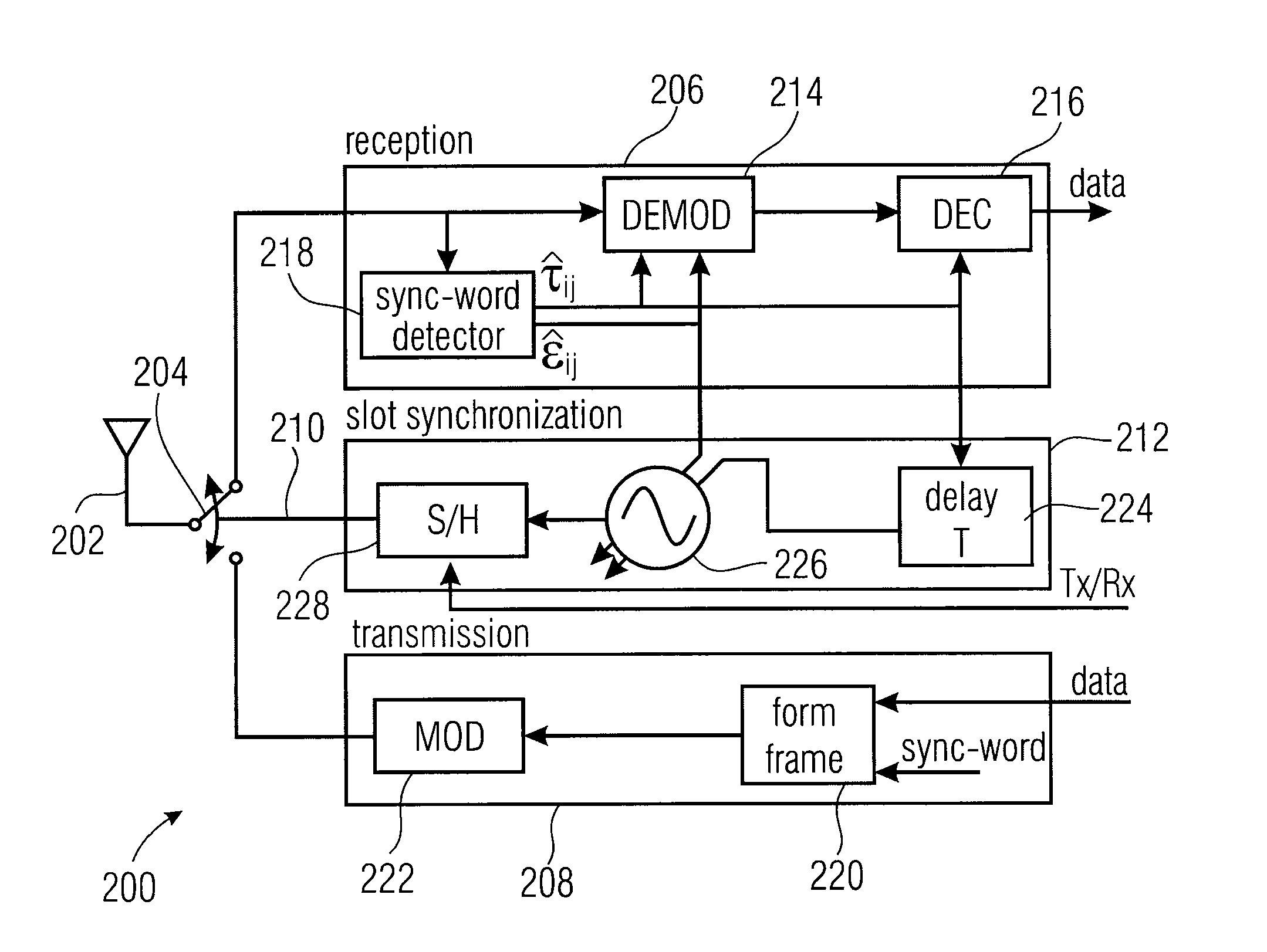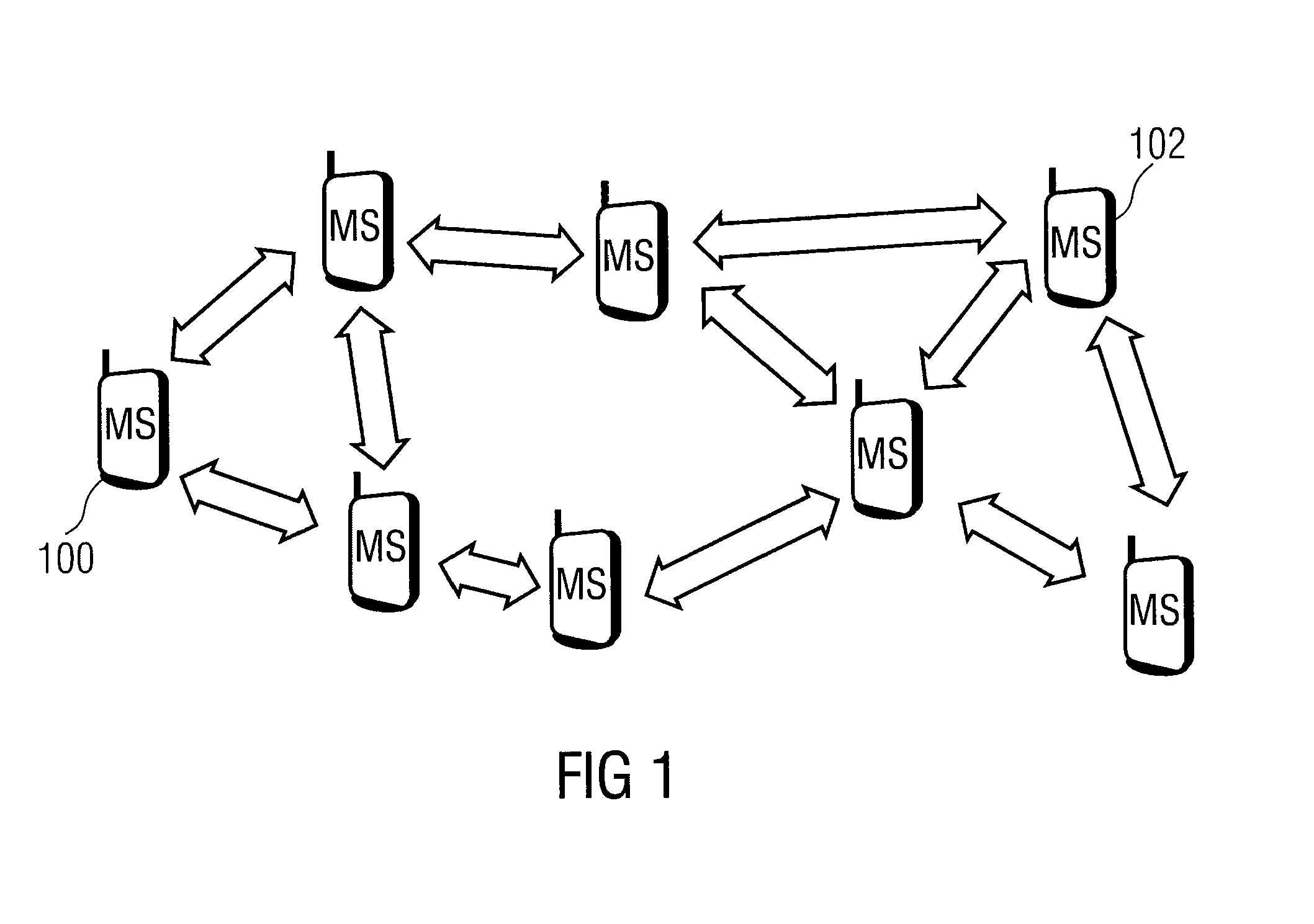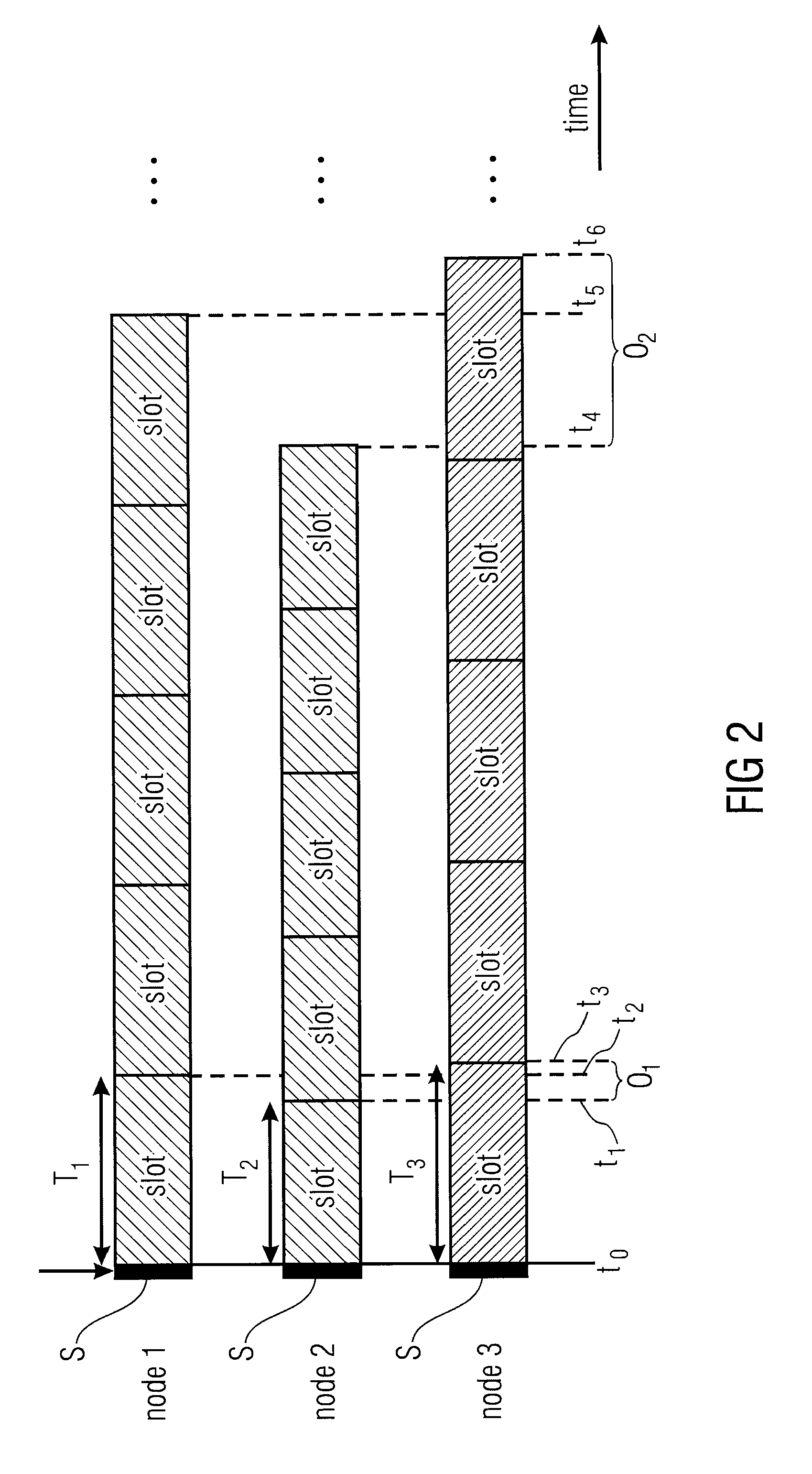Node in a wireless system and method for time and frequency synchronizing nodes in a wireless system
a wireless system and wireless technology, applied in the field of network synchronization, can solve the problems of not being able to fully meshed, not holding, and difficult to obtain clock signals from a macrocell indoors, so as to reduce or avoid the variation of slot length between nodes. , the effect of improving the synchronization schem
- Summary
- Abstract
- Description
- Claims
- Application Information
AI Technical Summary
Benefits of technology
Problems solved by technology
Method used
Image
Examples
Embodiment Construction
[0049]In the subsequent description of embodiments of the invention same or similar elements will be denoted by the same reference signs.
[0050]Prior to describing embodiments of the invention in further detail, reference is made to FIG. 3 illustrating the evolution of a time t of an imperfect clock ti(t) that is subject clock drift (the slope of the clock process) and clock noise. In FIG. 3 the ideal time is shown as line 104. As can be seen, for the ideal local oscillator the perfect clock of the local oscillator corresponds to the desired time in seconds, e.g. after five seconds also the clock ti(t) indicates five seconds. However, no clock is perfect as a clock timing offset corrupts the time counter and the clock drift corrupts the frequency which requires the periodic synchronization of the oscillator. As can be seen from the lines 106 representing the imperfect time due to the offset and drift, the desired time does not correspond to the time indicated by the clock. For exampl...
PUM
 Login to View More
Login to View More Abstract
Description
Claims
Application Information
 Login to View More
Login to View More - R&D
- Intellectual Property
- Life Sciences
- Materials
- Tech Scout
- Unparalleled Data Quality
- Higher Quality Content
- 60% Fewer Hallucinations
Browse by: Latest US Patents, China's latest patents, Technical Efficacy Thesaurus, Application Domain, Technology Topic, Popular Technical Reports.
© 2025 PatSnap. All rights reserved.Legal|Privacy policy|Modern Slavery Act Transparency Statement|Sitemap|About US| Contact US: help@patsnap.com



